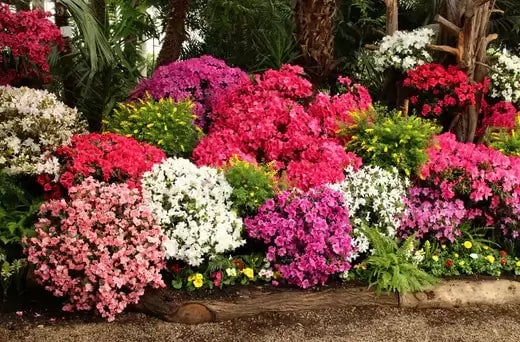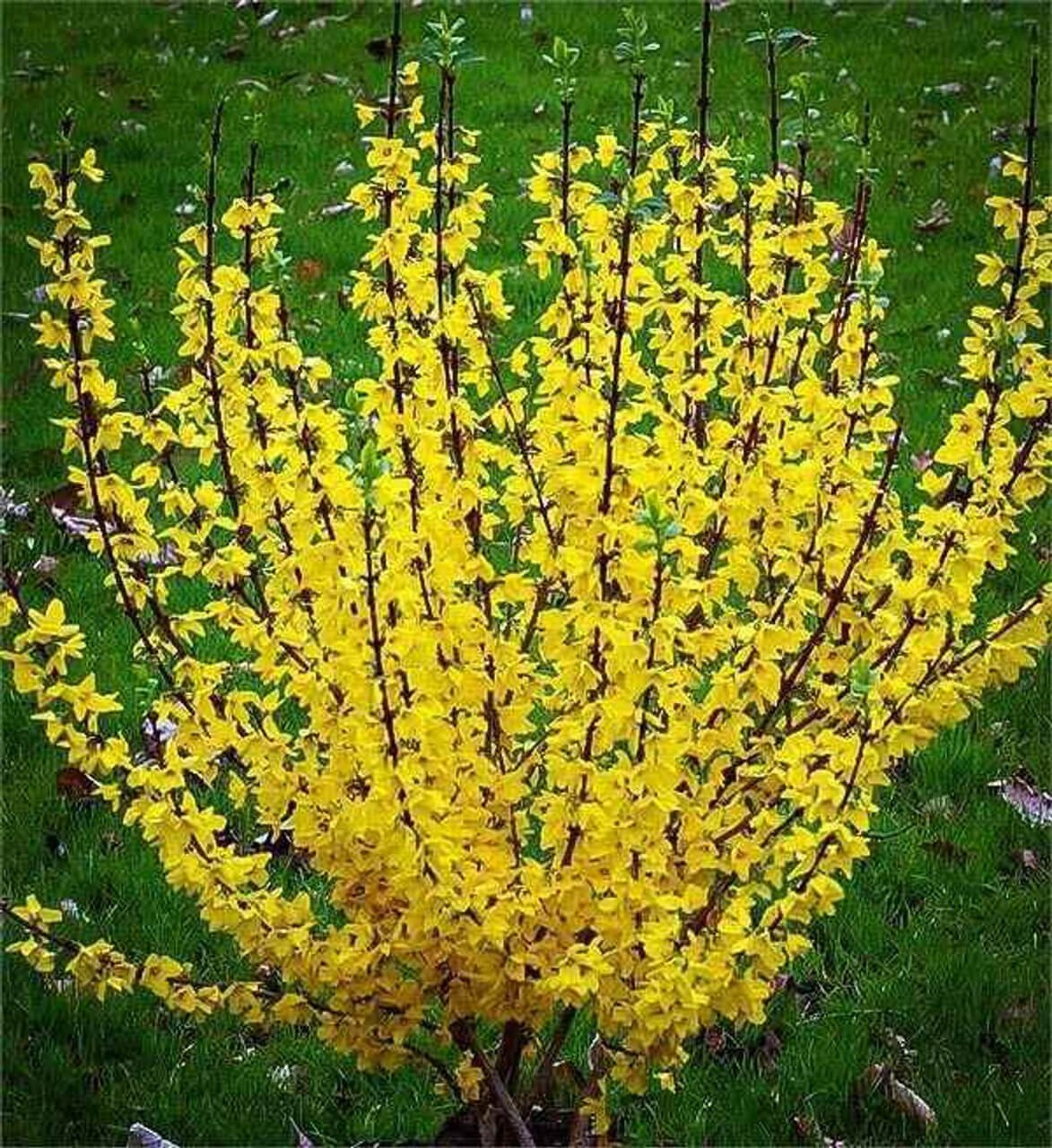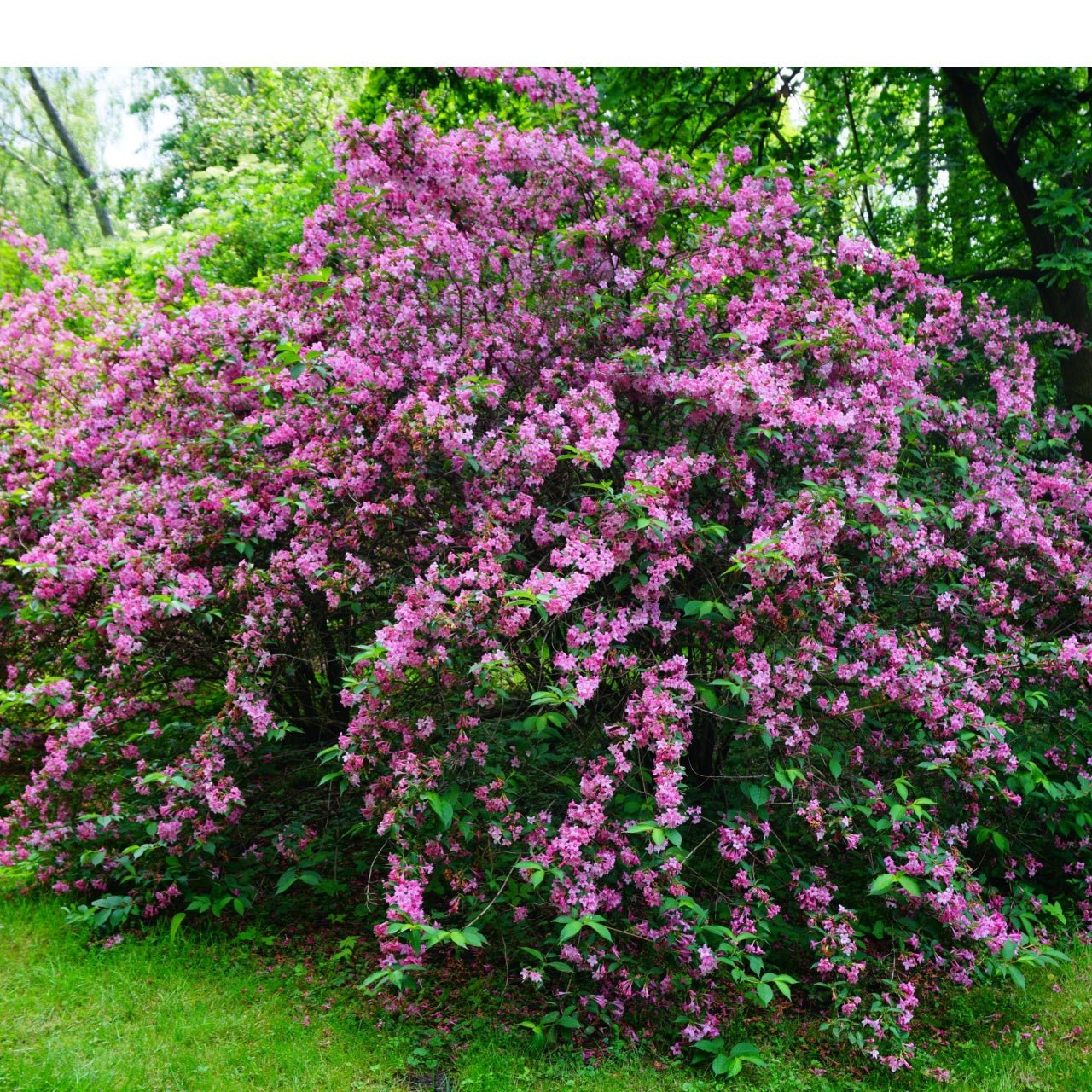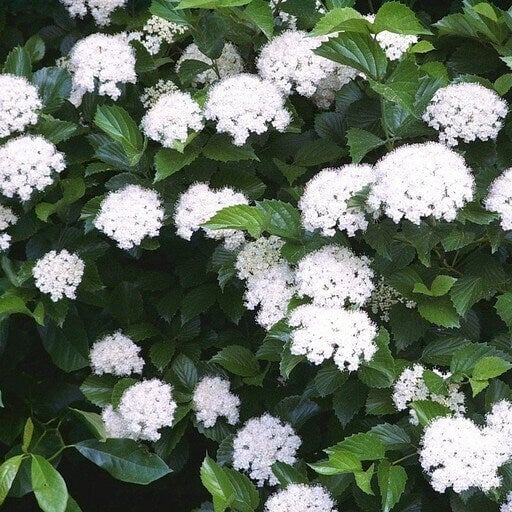Elevate Your Yard's Beauty
Enhancing the beauty of your yard goes beyond just a well-manicured lawn and neatly arranged garden beds. Flowering shrubs add depth, color, and texture to your outdoor space. These versatile plants offer a burst of vibrant blooms and provide year-round interest with their foliage, attracting pollinators and birds while creating a captivating landscape. In this article, we'll explore ten stunning flowering shrubs that will elevate your yard's aesthetics.
Rhododendron (Rhododendron spp.)
Rhododendrons are beloved for their large, showy flowers that come in various colors, from soft pinks to rich purples. Their evergreen foliage ensures a touch of greenery even in winter. Plant them in partially shaded areas with well-drained soil for optimal growth. They thrive in acidic soil and make a spectacular focal point in any yard.
Lilac (Syringa spp.)
Lilacs are a timeless favorite because of their enchanting fragrance and clusters of blossoms. These deciduous shrubs are available in various sizes and colors, from classic purple to white and even pink. Lilacs prefer full sun and well-drained soil. Their elegant blooms and delightful scent make them perfect for creating hedges or standalone plantings.
Hydrangea (Hydrangea spp.)
Hydrangeas are renowned for their stunning, globe-like flower heads, which can change color depending on the soil pH. Adjusting the soil's acidity can produce pink or blue blooms. These versatile shrubs thrive in partial shade and moist soil.
Forsythia (Forsythia spp.)
Forsythias herald the arrival of spring with their vibrant yellow flowers, which appear before their leaves. These fast-growing shrubs thrive in full sun and well-drained soil. Their arching branches make them ideal for natural hedges or focal points. Forsythias not only provides striking visual appeal but also attracts early-season pollinators.
Azalea (Rhododendron spp.)
Azaleas are close relatives of rhododendrons and are known for their dazzling spring displays. They offer a wide range of flower colors and thrive in dappled sunlight or partial shade. When planting azaleas, ensure they have well-drained, slightly acidic soil.
Weigela (Weigela spp.)
Weigelas are prized for their trumpet-shaped blooms that attract hummingbirds and butterflies. These hardy shrubs come in various sizes and colors, adding versatility to your landscape design. They prefer full sun to light shade and well-drained soil. Weigelas' arching branches create an elegant look, making them suitable for formal settings.
Spirea (Spiraea spp.)
With cascading clusters of flowers, spireas bring a graceful charm to any yard. Available in different varieties, their blooms can be white, pink, or deep red. These low-maintenance shrubs thrive in full sun and adapt well to different soil types. Their compact growth makes them excellent choices for borders, mass plantings, or ground covers.
Viburnum (Viburnum spp.)
Viburnums are prized for their diversity, offering a range of fragrant flowers, berries, and colorful foliage. Whether you choose the snowball-like blooms of the Japanese Snowball Viburnum or the aromatic flowers of the Koreanspice Viburnum, these shrubs are sure to make a statement. They thrive in full to partial sun and well-drained soil.
Mock Orange (Philadelphus spp.)
Mock oranges delight with their white, highly fragrant flowers reminiscent of orange blossoms. These deciduous shrubs are excellent for creating privacy screens or informal hedges. They prefer full sun to light shade and well-drained soil. Mock oranges are cherished for their captivating fragrance and elegant appearance.
Butterfly Bush (Buddleja spp.)
As the name suggests, the butterfly bush is a magnet for butterflies and other pollinators. Their long panicles of flowers come in various colors, adding vibrancy to your yard. These fast-growing shrubs thrive in full sun and well-drained soil. Butterfly bushes are perfect for attracting wildlife while making a colorful impact.
Flowering shrubs are invaluable additions to any yard, infusing it with colors, scents, and visual interest throughout the seasons. From the classic elegance of rhododendrons, the inviting fragrance of lilacs, and the versatility of hydrangeas, these shrubs offer myriad options for enhancing your outdoor space. W. Planting various shrubs will create a stunning visual display, support pollinators, and add depth to your outdoor oasis.
One of the key advantages of incorporating flowering shrubs into a yard is the burst of color they bring
Whether it's the delicate petals of roses, the cheerful blossoms of azaleas, or the bold hues of hydrangeas, these shrubs create eye-catching focal points that change with the seasons. This dynamic element not only pleases the human eye but also attracts pollinators such as bees and butterflies, contributing to the health and biodiversity of the ecosystem.
Beyond their aesthetic value, flowering shrubs offer privacy and screening. Tall, densely-growing shrubs like lilacs or forsythias can be strategically placed to create natural barriers that shield your yard from prying eyes or block out unsightly views. This natural form of privacy adds extra comfort and tranquility to your outdoor space. Flowering shrubs also play a crucial role in promoting biodiversity.
Many of these plants provide nectar and shelter for beneficial insects, birds, and small mammals. These creatures, in turn, assist in controlling pests, pollinating other plants, and maintaining a balanced ecosystem. By cultivating a yard that includes flowering shrubs, you actively contribute to the well-being of local wildlife.
Moreover, these shrubs require minimal maintenance compared to more demanding garden plants. Once established, they can thrive with moderate care, making them ideal for both experienced gardeners and beginners. Pruning, deadheading, and occasional feeding are usually sufficient to keep them healthy and blooming season after season.
When planning a garden or landscape, it's essential to consider the various bloom times of flowering shrubs.
It allows for a continuous display of colors throughout the year, ensuring that your yard remains vibrant even as seasons change. Early spring might feature the bright blossoms of forsythias and quinces, the summer brilliance of hydrangeas and butterfly bushes, and the rich hues of burning bush in the fall.
In conclusion, flowering shrubs benefit any yard, making them indispensable to landscape design. From their aesthetic allure and role in supporting wildlife to their low-maintenance nature and contribution to privacy, these versatile plants enrich outdoor spaces in numerous ways.
By carefully selecting a variety of flowering shrubs that suit your climate and preferences, you can create a visually stunning, ecologically friendly, and inviting yard that can be enjoyed year-round.
When and How to Plant Flowering Shrubs for a Thriving Garden
Any garden benefits from adding flowering shrubs, which provide permanent color and structure while adding seasonal charm. Gardeners selecting the correct plant varieties must also learn about optimal planting times for shrubs and proper maintenance procedures after planting. With attention to planting windows and soil preparation paired with continuous care and proven horticultural methods, you can secure the long-term thriving of your flowering shrubs. Explore this complete guide that shows you when to plant flowering shrubs and their best care practices.
1. Understanding the Best Time to Plant
The appropriate planting time for flowering shrubs determines their ability to develop strong root systems, leading to successful growth in future seasons.
Fall Planting (Early Autumn to Mid-Fall)
Many gardeners believe that fall represents the ideal planting season for shrubs. The residual summer warmth in the soil promotes root development, while reduced top growth stress happens because of the cooler air temperatures. Flowering shrubs can develop robust root systems since they face fewer environmental stresses like intense heat. Fall planting gives shrubs the time to establish themselves before entering their winter dormant phase. When springtime comes, these shrubs will have developed well and be prepared to flower.
Spring Planting (Early Spring to Mid-Spring)
Many gardeners choose spring to plant their shrubs, especially in areas that experience severe winter conditions. You may plant your flowering shrubs when the soil becomes workable and no longer stays frozen or waterlogged. Though spring-planted shrubs face a shorter period for root development before summer heat sets in, they can successfully adapt when planted early with regular watering and protection from harsh conditions.
Avoiding Summer's Peak Heat
Planting shrubs during summer is technically feasible but not recommended unless you can dedicate time to rigorous watering practices. The combination of high temperatures and strong sunlight creates excessive stress, making it challenging for newly planted shrubs to develop correctly. Plant during summer only at the beginning or end of the season and maintain soil moisture without causing root waterlogging.
2. Preparing the Site and Soil
Choosing any planting season requires thorough site and soil preparation.
Soil Testing
Your first step should be to analyze soil pH and nutrients because flowering shrubs achieve optimal growth in slightly acidic to neutral soil. Modifying soil pH effectively before planting requires sufficient lead time because lime and sulfur amendments take time to change soil chemistry.
Soil Amendment
Break up and turn the top 8 to 12 inches of soil while clearing away weeds and large debris. Mix organic substances like compost, aged manure, or leaf mold into the soil. This preparation method enhances soil drainage and nutrient access, allowing shrubs to develop roots within their optimum environment.
Proper Drainage
Select a site that prevents water accumulation after rainfall events. Solve drainage problems by constructing a raised bed or berm to prevent roots from becoming waterlogged.
3. Planting Steps
When your site meets all requirements, proceed with these planting steps.
Digging the Hole
The planting hole should be twice as big as the root ball with a depth that allows the root collar to be at ground level or slightly above. Incorrect planting depth may result in root rot and insufficient oxygen supply to the roots.
Positioning and Backfilling
Set the shrub gently into the hole, ensuring the root collar reaches the correct level. Mix native soil with organic amendments to backfill the hole and gently tamp it to eliminate air spaces. The first complete watering ensures the soil properly surrounds the plant roots.
Mulching
Apply a layer of organic mulch measuring 2 to 3 inches over the shrub's root area using materials such as bark chips or shredded leaves. Mulching preserves moisture while maintaining stable soil temperatures and minimizing weed competition. Maintain a few inches between the shrub's trunk and the mulch to prevent moisture accumulation that could lead to rot.
4. Watering and Fertilization
Watering Routine
Regular watering becomes essential during a shrub's first growing season to ensure proper growth. Deep watering of 6 to 8 inches once or twice weekly proves better than frequent light sprinklings. Local rainfall patterns, climate conditions and the shrub's unique needs, should guide your watering schedule adjustments.
Fertilizer Choices
A well-amended soil with compost eliminates the need for extra fertilizer during the first growing season. A balanced slow-release fertilizer will enhance plant growth and flowering when applied in early spring and in later seasons. Avoid excessive fertilization because surplus nitrogen produces many leaves but reduces flower production.
5. Pruning and General Maintenance
Pruning for Shape and Health
Strategic pruning helps flowering shrubs develop an attractive shape while promoting new growth that produces flowers. Spring-blooming shrubs can be pruned right after they bloom, while summer-blooming shrubs require pruning during late winter or early spring. Dead branches and damaged or crossed limbs can also be eliminated to enhance airflow and lower disease risk.
Weed Control
Free the shrub's surrounding area from weeds through manual weeding or mild cultivation techniques. The absence of resource competition helps the shrub thrive while limiting pest habitats. Mulch is a dependable weed management solution because it prevents weeds from developing fully.
Pest and Disease Monitoring
Monitor your shrubs consistently for any evidence of insect infestation, fungal disease, or other problems. By detecting problems early, we can administer faster treatments using natural or specific methods to avoid broad-spectrum pesticides that endanger beneficial insects.
6. Seasonal Considerations and Long-Term Care
Winter Protection
To protect shrubs against harsh winds in colder climates, additional root insulation should be applied, using a thicker mulch layer or wrapping the shrubs in burlap.
Rejuvenation
Over time, older shrubs may benefit from rejuvenation pruning: Yearly removal of one-third of the oldest stems from ground level can promote new, robust growth from the shrub's base.
Observation and Adaptation
Every garden possesses its distinctive character, while shrubs demonstrate varied reactions to different microclimates. Monitor your shrubs' yearly performance to adjust your watering, fertilizing, and pruning routines appropriately.
Flowering shrubs should be planted during the mild early spring or autumn periods because these conditions promote successful root development. Success in shrub growth stems from choosing the appropriate planting period while combining comprehensive site and soil preparation with steady watering and attentive pruning. Regular care and monitoring will lead your flowering shrubs to produce abundant blooms and vibrant foliage while making your garden more charming yearly. When you dedicate time to comprehend the requirements of shrubs and plant them at the perfect time, you create a thriving landscape filled with colorful shrubs that enhance your outdoor area.
Read more

TN Nurseries best selling shrubs1. Forsythia2. Privets3. Burning bush4. Arrowwood viburnum5. Blue hydrangeaSunday, April 3Flowering trees and shrubs can decorate your garden during the season, and ...

A beautiful garden is something every homeowner wants, and to have a beautiful garden; you have to ensure that the plants are healthy. Unhealthy or diseased plants can ruin the garden and spread di...





